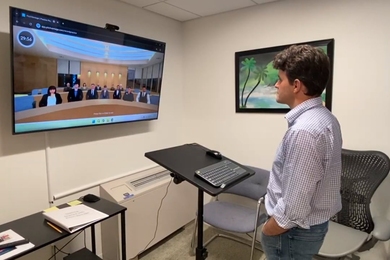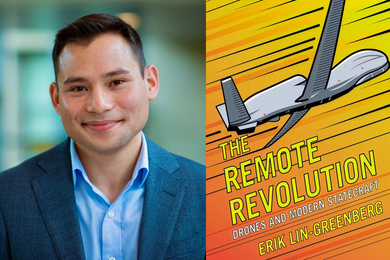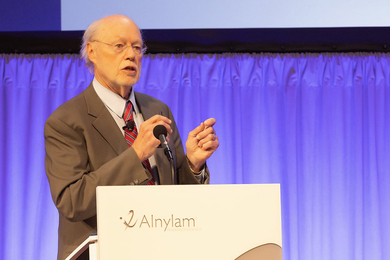The artist's trained eye can detect distinctions others can't; musicians pick up subtle changes in tone lost on the nonmusical. Brain researchers call these abilities perceptual learning.
Following up on an accidental finding, MIT researchers at the Picower Institute for Learning and Memory and colleagues have uncovered a mechanism for this phenomenon. The study will appear in the Aug. 3 issue of Neuron.
The original idea was to look at how visual deprivation affects the brain. But before mice in the experiment were deprived of vision, researchers recorded baseline measurements by showing them a striped pattern on a video screen.
Unexpectedly, the researchers found that although no change showed up during the viewing session, as few as 12 hours later the mice were more visually "tuned" to the pattern they had seen. Over several sessions, the mice's brain responses to the stripes increased, with the biggest responses occurring to stripes the mice saw more often. The researchers dubbed this change "stimulus selective response potentiation" or SRP.
"The properties of SRP are strikingly similar to those described for some forms of human perceptual learning," said Mark Bear, Picower Professor of Neuroscience and co-author of the study. As a result, "understanding this type of perceptual learning is important because it can reveal mechanisms of implicit memory formation and might be exploited to promote rehabilitation after brain damage. Detailed knowledge of how practice changes brain chemistry is likely to suggest new pharmacological and behavioral therapies to facilitate these changes.
"Brain researchers have studied perceptual learning for a long time, but until now, there has never been any insight into the mechanism behind it," said Bear, who also holds an appointment in MIT's Department of Brain and Cognitive Sciences.
The researchers specifically discovered that new neurotransmitter receptors are delivered to synapses, the connections among neurons, in the brain's visual cortex, leading to SRP. Changes in the brain triggered by learning strengthen the synapses.
In the MIT study, perceptual learning occurred in both young and adult mice, implying that the ability to sharpen sensory perception is not lost with aging.
In addition to Bear, authors include Mikhail Y. Frenkel, Picower Institute postdoctoral associate; Nathaniel B. Sawtell of Oregon Health and Sciences University; Antonia Cinira M. Diogo of the Universidade Federal do Rio de Janeiro; Picower Institute postdoctoral associate Bongjune Yoon; and Rachael L. Neve of McLean Hospital.
This work is supported by the Howard Hughes Medical Institute and the National Eye Institute.





